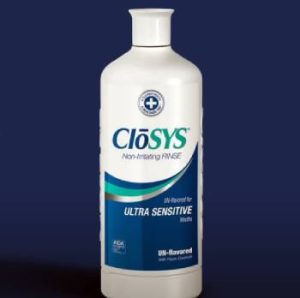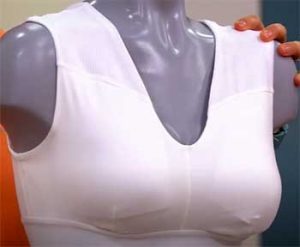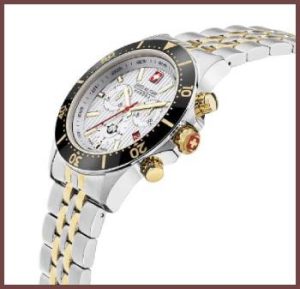When it comes to correcting poor posture or alleviating back pain, the Kizu Spine Posture Corrector might sound like a solution.
It’s designed to support your back, shoulders, and neck, offering a comfortable fit to help you stand straighter and feel better. But after trying it myself and reading numerous reviews, I have to say: this product may not be all it’s cracked up to be.
While it comes with a number of promises, there are significant drawbacks that are hard to overlook.
If you’re dealing with back pain or slouching habits and want a simple way to fix your posture, there are other options on the market that provide better support, comfort, and durability.
While the Kizu Posture Corrector does have some benefits, it might not be the best choice for everyone. Let’s take a closer look at the pros and cons, as well as why you might want to consider alternatives.
What’s Good About the Kizu Spine Posture Corrector?
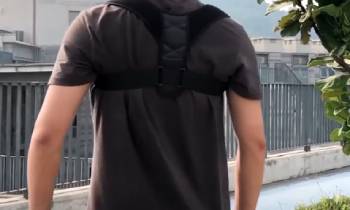
- Ergonomic Design The Kizu Spine Posture Corrector features an ergonomic design aimed at providing support to the upper back, shoulders, and neck. The idea is that it will relieve pressure in these areas, making it ideal for people who suffer from conditions like scoliosis or general back pain.
- Comfortable Fit The product is made with neoprene, which adjusts to your body for a snug fit. The fabric is breathable, which is a big plus, especially if you’re using it for long periods. There’s nothing worse than wearing a posture corrector that makes you feel like you’re sweating all the time, so this aspect is definitely a highlight.
- Adjustable Straps The adjustable straps ensure that you can customize the fit according to your body size. This flexibility is great if you want a more tailored fit, as it can accommodate a range of sizes, from 27” to 47”. You won’t feel like you’re stuck with one-size-fits-all, which is a positive.
- Discreet Under Clothing One thing I do appreciate about this product is how discreet it is under clothing. Whether you’re at work or out for a run, the Kizu Posture Corrector stays relatively hidden. You won’t have to worry about your friends or coworkers noticing it, which makes it more convenient for daily wear.
- Potential for Long-Term Benefits Another benefit of this posture corrector is the potential for long-term improvement. As you continue to wear it, the idea is that your muscles will start to adapt, helping you maintain better posture even when you’re not using the brace. This can help prevent pain from returning.
How to Get the Most Out of Your Kizu Spine Posture Corrector
If you’re still determined to give the Kizu Spine Posture Corrector a try, here are a few tips to ensure you’re using it in the best way possible:
- Start Slowly: If you’re not used to wearing a posture corrector, it’s a good idea to start wearing it for short periods at first. Gradually increase the time as your body gets accustomed to the support. Wearing it for several hours a day at first might be too overwhelming and could lead to discomfort.
- Adjust the Fit Properly: Make sure to adjust the straps to achieve the perfect fit. While it might take a little trial and error, getting the correct fit will ensure the product works as intended and provides the right support. Don’t just rely on the straps—take time to adjust them before every use to ensure comfort and effectiveness.
- Combine with Other Posture Practices: The Kizu Posture Corrector works best when combined with other posture-improving habits. Try sitting up straighter, engaging your core muscles, and avoiding slouching when not wearing the corrector. It’s also a good idea to incorporate stretching exercises into your routine to improve flexibility and prevent pain.
- Wear it During Light Activities: Wear the Kizu Posture Corrector during light activities, such as walking or working at your desk. Avoid wearing it during high-intensity workouts or activities that require a lot of movement, as the product can slip and become uncomfortable.
What’s Not So Great About the Kizu Spine Posture Corrector?
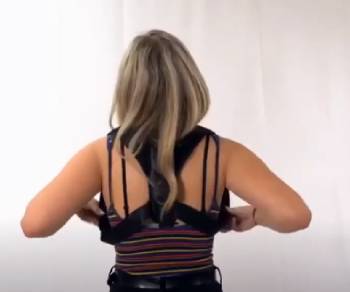
- Discomfort with Use One of the main issues I have with the Kizu Spine Posture Corrector is the discomfort. Although the straps are adjustable, some users, including myself, have found that they can dig into your skin, especially around the armpits. This can cause irritation, which makes the product less pleasant to wear over extended periods.
- Not Effective for Everyone Another downside is that the brace doesn’t seem to work well for everyone. Some reviewers mentioned that, despite wearing it regularly, they didn’t notice any significant improvement in their posture or pain levels. The product may not be effective for people with more severe back or spinal issues.
- Slips and Doesn’t Stay in Place The Kizu Posture Corrector is designed to stay in place, but it often slides up when sitting down or moving around too much. This issue can render the product ineffective, especially when you need consistent support. Wearing it during activities or long hours of sitting may leave you frustrated.
- Durability Concerns Another common complaint about this product is its durability. Some users found that the velcro straps started to lose their grip after just a few uses. This could lead to the posture corrector becoming useless over time, making it a less reliable option for long-term use.
- Complicated Fit While the adjustable straps are supposed to help, many users found it difficult to get a good fit. The straps might not tighten enough to provide the desired support, and this can lead to the product feeling loose or ineffective.
Pros & Cons of the Kizu Spine Posture Corrector
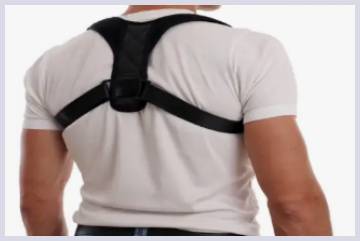
Pros:
- Ergonomic Design: The Kizu Spine Posture Corrector is designed to provide relief from back, shoulder, and neck pain. Its ergonomic construction targets key areas for effective posture correction, making it an appealing option for those with long-term back issues or slouching problems.
- Comfortable Fit: Made from high-quality neoprene, this posture corrector offers a comfortable fit, ensuring breathability and flexibility. This feature is particularly important for people who need to wear it for extended periods.
- Adjustable Straps for Custom Fit: One of the standout features is the fully adjustable straps, which can accommodate a wide range of body sizes (from 27″ to 47″). This makes the product versatile and suitable for most people, helping to ensure a snug, comfortable fit.
- Discreet Under Clothing: The slim and discreet design allows you to wear it under your clothes without it being noticeable. Whether you’re at work, exercising, or running errands, it remains relatively inconspicuous, allowing for continued use throughout the day.
- Helps with Muscle Memory: Regular use of the Kizu Spine Posture Corrector encourages your muscles to maintain proper posture, even without the brace. This can help you improve your posture over time and alleviate discomfort even after removing the device.
Cons:
- Discomfort Around Armpits: A significant drawback reported by users is the discomfort caused by the straps digging into the armpits. This can make wearing the posture corrector uncomfortable, especially for those who need to wear it for extended periods.
- Slips and Moves During Use: Another issue is that the posture corrector may slide up or shift around during sitting or bending. This means you might need to constantly adjust it to ensure it stays in place, leading to a less effective posture correction experience.
- Velcro Issues: Several users have reported that the velcro straps lose their effectiveness after multiple uses. This can render the posture corrector less reliable, as the velcro may not stay in place or might lose its ability to tighten properly.
- Ineffective for Severe Postural Issues: While the Kizu Spine Posture Corrector works well for mild to moderate posture issues, it may not provide enough support for those with more severe spinal conditions like scoliosis or advanced spondylosis. For serious back issues, a more supportive product may be required.
- Poor Durability Over Time: The Kizu Posture Corrector has received some complaints about its durability. After several weeks of use, users have reported that it loses its effectiveness or starts showing signs of wear, particularly the velcro straps and neoprene material.
Also Read: My Thoughts On Aletha Hip Hook
Kizu Spine Posture Corrector Vs. Other Posture Correctors
- Kizu Spine Posture Corrector Vs. Upright Go 2
The Kizu Posture Corrector offers a more traditional, wearable solution, while the Upright Go 2 is a smart device that sticks to your back and provides feedback when your posture slips. The Upright Go 2 is a bit more high-tech, but it comes with a higher price tag. For simplicity and comfort, the Kizu might be a better fit, but for tech enthusiasts, the Upright Go 2 is worth considering.
- Kizu Spine Posture Corrector Vs. Posture Medic
Posture Medic is designed to strengthen back muscles over time, like the Kizu, but it offers a more targeted approach for upper back pain. The Kizu, on the other hand, offers more versatility and can be used for both neck and upper back support. If you’re looking for something that works on muscle memory, Posture Medic might be the better choice.
- Kizu Spine Posture Corrector Vs. Flexguard Support
The Flexguard Support posture corrector offers similar benefits as the Kizu but is built with more durable materials. It’s also designed for people with more severe back pain and offers better overall support for heavy lifting. While the Kizu is great for everyday use, Flexguard might be the better option for long-term spinal support.
- Kizu Spine Posture Corrector Vs. Copper Compression Posture Support
Copper Compression’s posture support features compression fabric that enhances blood flow and provides relief for arthritis or other conditions. While the Kizu uses a more traditional posture-correcting approach, Copper Compression can be a better option if you’re dealing with additional issues like joint pain or swelling.
- Kizu Spine Posture Corrector Vs. ComfyMed Posture Corrector
ComfyMed’s posture corrector offers a similar design with adjustable straps but includes a wider, more padded back support. The Kizu is lighter and more breathable, but the ComfyMed might offer more comfort for those who need extra cushioning.
Also Read: My Thoughts On Neck Ease Ultrasonic Lymphatic Neck
Frequently Asked Questions (FAQs)
Yes, posture correctors can be effective in improving posture and alleviating back pain, but they work best when combined with good posture habits and exercises.
The most effective posture corrector depends on your specific needs. For general support, the Flexguard Support or Upright Go 2 might be more effective than the Kizu.
Start with 30 minutes to an hour per day and gradually increase the time as your body gets used to the support.
Some users may experience discomfort or irritation, particularly around the armpits. It’s important to adjust the fit and wear the corrector for short periods to avoid strain.
Final Thoughts
After using the Kizu Spine Posture Corrector and reviewing its pros and cons, it’s clear that while it might work for some, it’s not the best solution for everyone. Its comfort, adjustable fit, and discreet design are definitely appealing, but the discomfort around the armpits, the slipping problem, and durability issues leave a lot to be desired. If you’re looking for a reliable posture corrector, I recommend exploring other options that offer better comfort and long-term effectiveness.

